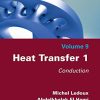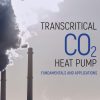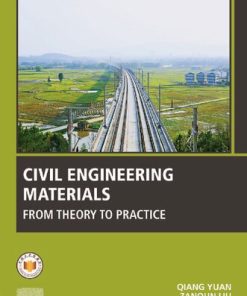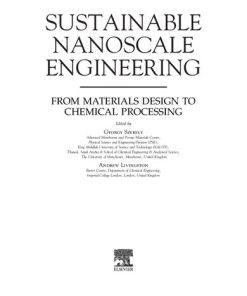Thermofluids From Nature to Engineering 1st edition by David Ting 0323914551 9780323914550
$50.00 Original price was: $50.00.$25.00Current price is: $25.00.
Thermofluids: From Nature to Engineering 1st edition by David Ting – Ebook PDF Instant Download/DeliveryISBN: 0323914551 9780323914550
Full download Thermofluids: From Nature to Engineering 1st edition after payment.
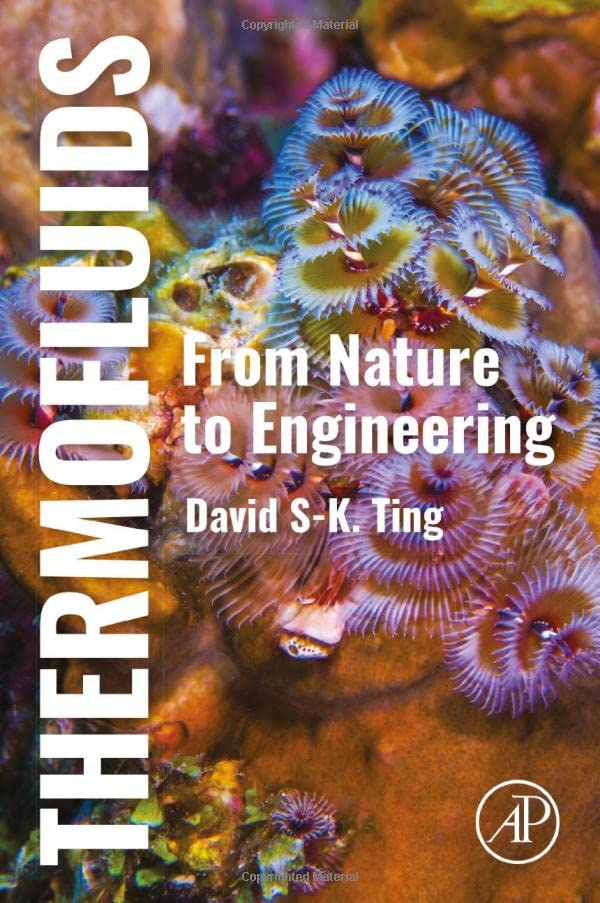
Product details:
ISBN-10 : 0323914551
ISBN-13 : 9780323914550
Author : David Ting
Thermofluids: From Nature to Engineering presents the fundamentals of thermofluids in an accessible and student-friendly way. Author David Ting applies his 23 years of teaching to this practical reference which works to clarify phenomena, concepts and processes via nature-inspired examples, giving the readers a well-rounded understanding of the topic. It introduces the fundamentals of thermodynamics, heat transfer and fluid mechanics which underpin most engineering systems, providing the reader with a solid basis to transfer and apply to other engineering disciplines.
With a strong focus on ecology and sustainability, this book will benefit students in various engineering disciplines including thermal energy, mechanical and chemical, and will also appeal to those coming to the topic from another discipline.
Thermofluids: From Nature to Engineering 1st Table of contents:
Part 1 Introduction
Chapter 1 Thermofluids
Chapter Objectives
Nomenclature
Greek and other symbols
1.1 What is Thermofluids?
1.2 Thermodynamics, fluid mechanics, and heat transfer
1.3 Dimensions and units
1.4 Organization of the book
Problems
References
Chapter 2 Energy and thermodynamics
Chapter Objecives
Nomenclature
2.1 The study of energy
2.2 The conservation of energy
2.3 The quality of energy
2.4 Thermodynamic systems
2.5 Thermodynamic state, equilibrium, and properties
Problems
References
Chapter 3 Moving fluids
Chapter Objecives
Nomenclature
Greek and other symbols
3.1 What is a fluid?
3.2 The continuum fluid
3.3 Nature thrives in moving fluids
3.4 What is viscosity?
3.5 Newtonian fluids
3.6 A classification of fluid motions
3.7 Fluid mechanics textbooks
Problems
References
Chapter 4 The transfer of thermal energy
Chapter Objecives
Nomenclature
Greek and other symbols
4.1 What is thermal energy?
4.2 Specific heats
4.3 Heat transfer versus thermodynamics
4.4 The three heat transfer mechanisms
Problems
References
Part 2 An Ecological View on Engineering Thermodynamics
Chapter 5 The four laws of ecology
Chapter Objecives
Nomenclature
5.1 What is ecology?
5.2 The four laws of ecology
5.3 Animal thermoregulation
5.4 Learning from intelligent designs
Problems
References
Chapter 6 The first law of thermodynamics
Chapter Objecives
Nomenclature
Greek and other symbols
6.1 Energy
6.2 Thermodynamic systems
6.3 Heat and work transfer
6.4 Conservation of energy
6.5 Moving boundary work
6.6 Enthalpy
6.7 Thermodynamic cycle
Problems
References
Chapter 7 The second law of thermodynamics
Chapter Objecives
Nomenclature
Greek and other symbols
7.1 Introduction
7.2 One-way energy flow
7.3 Entropy
7.4 Heat source and sink
7.5 Heat engine
7.6 Reverse heat engines
Problems
References
Part 3 Environmental and Engineering Fluid Mechanics
Chapter 8 Fluid statics
Chapter Objecives
Nomenclature
Greek and other symbols
8.1 What is pressure?
8.2 Fluid statics
8.3 Hydrostatic pressure
8.4 Measuring pressure
8.5 Hydrostatic force on a surface
8.6 Buoyancy
Problems
References
Chapter 9 Bernoulli flow
Chapter Objecives
Nomenclature
Greek and other symbols
9.1 Streamline, streakline, and pathline
9.2 Streamline, streamtube, and Bernoulli’s Wig
9.3 The Bernoulli equation
9.4 Bernoulli’s pressures
9.5 Flow rate measurements
9.6 Energy line and hydraulic grade line
Problems
References
Chapter 10 Dimensional analysis
Chapter Objecives
Nomenclature
Greek and other symbols
10.1 Dimensional homogeneity
10.2 Scaling and dimensional analysis
10.3 Buckingham Pi theorem
10.4 Prevailing nondimensional parameters in fluid mechanics
10.5 Some remarks on dimensional analysis
Problems
References
Chapter 11 Internal flow
Chapter Objecives
Nomenclature
Greek and other symbols
11.1 Flow in a channel
11.2 The Reynolds number and the type of pipe flow
11.3 Developing pipe flow
11.4 Fully developed horizontal pipe flow
11.5 Fully developed inclined pipe flow
11.6 Energy conservation and head loss in pipe flow
11.7 Major and minor losses in pipe flow
Problems
References
Chapter 12 External flow
Chapter Objecives
Nomenclature
Greek and other symbols
12.1 Everyday external flow
12.2 Lift and drag
12.3 Boundary layer
12.4 Flat plate boundary layer development
12.5 Bluff body aerodynamics
Problems
References
Part 4 Ecophysiology-flavored Engineering Heat Transfer
Chapter 13 Steady conduction of thermal energy
Chapter Objecives
Nomenclature
13.1 Fourier’s law of heat conduction
13.2 From electric resistance to thermal resistance
13.3 One-dimensional heat conduction in cylindrical coordinates
13.4 Heat conduction radially through a sphere
13.5 Steady conduction through multilayered walls
13.6 Multilayered inhomogeneous walls
Problems
References
Chapter 14 Transient conduction of thermal energy
Chapter Objecives
Nomenclature
Greek and other symbols
14.1 A lumped system with homogeneous temperature
14.2 Biot number
14.3 One-dimensional transient problems
14.4 Semi-infinite solid
Problems
References
Chapter 15 Natural convection
Chapter Objecives
Nomenclature
Greek and other symbols
15.1 Natural convection and thermals
15.2 Thermal expansion and buoyancy force
15.3 Nondimensional parameters in natural convection
15.4 The classical Rayleigh–Bernard convection
15.5 Continuous thermal plumes and buoyant jets
15.6 Free convection along a vertical plate
15.7 Other free convection cases
Problems
References
Chapter 16 Forced convection
Chapter Objecives
Nomenclature
Greek and other symbols
16.1 What is the force behind forced convection?
16.2 The convection heat transfer coefficient
16.3 Forcing heat to convect from a flat surface
16.4 Primary parameters in forced convection
16.5 Nusselt number, Reynolds number, and Prandtl number
16.6 Nu–Re–Pr relationships
16.7 Relating heat convection with flow shear at the wall
16.8 Forced convection around a circular cylinder
16.9 Other nondimensional parameters of forced convection
16.10 Internal forced convection
Problems
References
Chapter 17 Thermal radiation
Chapter Objecives
Nomenclature
Greek and other symbols
17.1 The radiating Sun
17.2 All bodies above absolute zero radiate heat
17.3 Absorptivity, transmissivity, and reflectivity
17.4 View or shape factors
17.5 Further reading on thermal radiation
Problems
References
Chapter 18 Heat exchangers
Chapter Objecives
Nomenclature
Greek and other symbols
18.1 Nature thrives by exploiting effective heat exchangers
18.2 Counter-flow, parallel-flow, and crossflow heat exchangers
18.3 Moving along a constant-temperature passage
18.4 Heat exchange between a hot stream and a cold stream
18.5 Log mean temperature difference
18.6 Heat exchanger effectiveness and number of transfer units
People also search for Thermofluids: From Nature to Engineering 1st:
nature e vitamin e review
where does e occur in nature
the fluid nature of being
nature cure courses
nature reviews nanotechnology
Tags:
Thermofluids,Nature,Engineering,David Ting
You may also like…
Science (General) - Theories of Science
Reason in Nature: New Essays on Themes from John McDowell Matthew Boyle
Engineering - Environmental
Engineering - Environmental
Nourishing Tomorrow: Clean Engineering and Nature-Friendly Living 1st Edition David S-K Ting
Engineering - Civil & Structural Engineering
Shield Tunnel Engineering: From Theory to Practice 1st Edition
Politics & Philosophy - European & American Philosophy
Romantic Empiricism: Nature, Art, and Ecology from Herder to Humboldt Dalia Nassar
dictionaries & phrasebooks
Understanding Intercultural Communication 2nd Edition Stella Ting-Toomey


